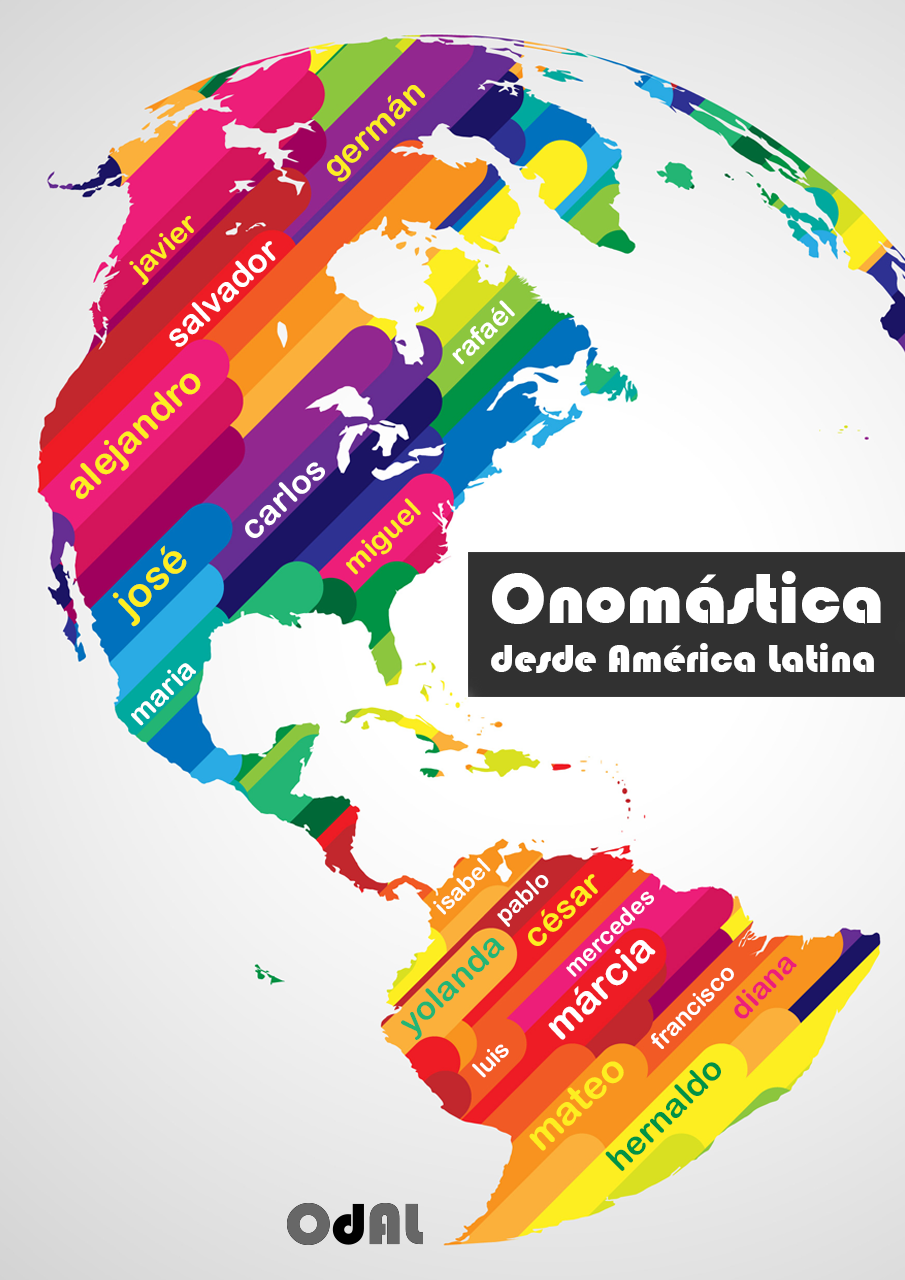From Nordic to Hispanic - Shift in a Family’s Given Names
DOI:
https://doi.org/10.48075/odal.v4i1.31600Keywords:
Nordic first names, migration, Argentina, First name, cultural changeAbstract
This article examines historical changes in naming practices through first names in a region of Argentina with a history of migration from Northern Europe. First names in a migrant family are used as a case study and different periods compared. The data show the use of Nordic names in the first generations, with a drastic change towards Hispanic first names from the third generation onwards. Also hybrid naming practices that combine both Nordic, Hispanic and other names are noted. The results show how first names in Misiones have shifted over time due to changes in the community and Argentinian policies, and how these practices reflect political and ideological stances.
References
Ainiala, T. (2008). Socio-onomastics. In J. Östman & J. Verschueren (Eds.), Handbook of Pragmatics Online 2008 Installment, (pp. 1–18). John Benjamins, Amsterdam. https://doi.org/10.1075/hop.12
Ainiala, T., Saarelma, M. & Sjöblom, P. (2016). Names in Focus. An introduction to Finnish onomastics. The Finnish Literature Society (SKS), Helsinki.
Aldrin, E. (2016). Names and Identity. In C. Hough (ed.), The Oxford Handbook of Names and Naming (2016; online edn, Oxford Academic, 7 Mar. 2016), https://doi-org.libproxy.helsinki.fi/10.1093/oxfordhb/9780199656431.013.24
Alhaug, G. & Saarelma, M. (2017). Naming of children in Finnish and Finnish-Norwegian families in Norway. In T. Ainiala & J. Östman (eds.), Socio-onomastics. The Pragmatics of names (pp. 69–91). Amsterdam: John Benjamins.
Amaral, E.T. R. & Seide, M. S. (2022). Personal names. An introduction to Brazilian anthroponymy. Araraquara, Letraria.
Amit, K., & Dolberg, P. (2023). Who do you think I am? Immigrant’s given name and their perceived identity. Comparative Migration Studies, 11(6), 1–18. https://doi.org/10.1186/s40878-023-00328-1
Anderson, B. (1983). Imagined communities: Reflections on the origin and spread of nationalism, Verso.
Aronen, P. & Pakkasvirta, J. (1998). Kahvi, pahvi ja tango: Suomen ja Latinalaisen Amerikan suhteet, Gaudeamus, Helsinki.
Bucholtz, M. & Hall, K. (2004). Language and Identity. In A. Duranti (Ed.), A Companion to Linguistic Anthropology, (pp. 369–394), Blackwell Publishing, Malden.
DeLaney, J. (2014). Immigration, identity, and nationalism in Argentina, 1850–1950. In N. Foote & M. Goebel (Eds.), Immigration and National Identities in Latin America (pp. 91-114). University Press of Florida. https://doi.org/10.2307/j.ctvx1htrh.8
Finch, J. (2008) Naming Names. Kinship, Individuality and Personal Names. Sociology
, 709–723.
Flodell, S. A. (1974). Tierra Nueva: svensk grupputvandring till Latinamerika, integration och församlingsbildning. [Doctoral dissertation, Svenska Institutet för missionsforskning, Uppsala]
Flodell, G. (2012). Om immigrantsvenskan i Misiones, Argentina. Norsk Lingvistisk Tidsskrift, 30, 165–182. https://ojs.novus.no/index.php/NLT/article/view/206
Fogeler, María Rosa. (2007). Etnografía y red de parentesco de los colonos escandinavos en las Sierras Centrales de Misiones. [Master’s thesis, Universidad Nacional de Misiones]
García Gallarín, C. (2012). Diccionario Histórico de Nombres de América y España, Sílex, Madrid.
Ingridsdotter, J. (2020). ‘Waffles with dulce de leche’: Settler Society and the Making of Swedish Heritage in Northern Argentina. Ethnologia Scandinavica, 50, 145-168.
Ingridsdotter, J. (2021). A narrative of suffering and soil: Swedish migration and settler colonialism in northeast Argentina, Cultural Studies, 37(3), 485–507. https://doi.org/10.1080/09502386.2021.1988120
Lähteenmäki, O. & Kero, R. (1989). Colonia Finlandesa: uuden Suomen perustaminen Argentiinaan 1900-luvun alussa, Suomen historiallinen seura, Helsinki.
Lieberson, S. (2000). A Matter of Taste: How Names, Fashions and Culture Change, Yale University Press.
Makoni, S. & Pennycook, A. (2005). Disinventing and (Re)Constituting Language. Critical Inquiry in Language Studies 2(3), 137–156. https://doi.org/10.1207/s15427595cils0203_1
Nabão, R. M. (2007). O estudo de nomes próprios de nipo-brasileiros de Terra Roxa. Dissertação (Mestrado) – Programa de Pós-Graduação em Letras da Unioeste, Cascavel.
Nazar, R., Renau, I., Acosta, N, Robledo, H., Soliman, M. & Zamora, S. (2021). Corpus-Based Methods for Recognizing the Gender of Anthroponyms. Names, 69(3), https://doi.org/10.5195/names.2021.2238
Seide, M.S. 2017. Antroponímia e migração: os nomes de brasileiros descendentes de lituanos. Web-Revista SOCIODIALETO, 7 (21), 52¬81.
Seide, M. S. (2020). Antroponimia, diáspora y migración: los descendientes de lituanos en Brasil. Onomástica Desde América Latina, 1(1), 100–121. https://doi.org/10.48075/odal.v1i1.24156
Sippola, E. & Vitikka, I. (2022). Sustitución lingüística en la Colonia Finlandesa, Misiones, Argentina. Revista digital de políticas lingüísticas 16.
Sippola, E. (2022). Spanish contact influence in a Finnish heritage community in Misiones, Argentina. Nordic Journal of Linguistics, 1–21. https://doi.org/10.1017/S0332586521000251
Stolz, T. & Warnke, I. H. (2016). When places change their names and when they do not. Selected aspects of colonial and postcolonial toponymy in former French and Spanish colonies in West Africa – the cases of Saint Louis (Senegal) and the Western Sahara. International Journal of the Sociology of Language, 239, 29–56. https://doi.org/10.1515/ijsl-2016-0004
Tessieri, E. (1986). Kaukainen maani, WSOY, Helsinki.
Tessieri, E. (2008). Colonia Finlandesa: The Second Ship, and Some Factors that Led to the Demise of a Finnish Colony in Northeast Argentina. Siirtolaisuus/Migration, 2(2008), 24–29.
Downloads
Published
How to Cite
Issue
Section
License
Copyright (c) 2023 Eeva Sippola

This work is licensed under a Creative Commons Attribution-NonCommercial-ShareAlike 4.0 International License.
Creative Commons Copyright Notice
Open Access Journals Policy
Authors who publish in this journal agree to the following terms:
1. Authors retain the copyright and grant the journal the right of first publication, with the work simultaneously licensed under the Creative Commons Attribution License that allows the sharing of the work with recognition of authorship and initial publication in this journal.
2. Mandatory authorities to assume commitments, for non-exclusive distribution of the version of the work published in this journal (eg, publish in an institutional repository or as a book chapter), with recognition of authorship and initial publication in this journal.
3. Authors are allowed and encouraged to publish and distribute their work online (eg in institutional repositories or on the personal page) at any point before or during the editorial process, as this can generate productive changes as well as increase impact and citation of the published work (See The Effect of Open Access).
Creative Commons License
This work is licensed under a Creative Commons Attribution-NonCommercial-ShareAlike 4.0 International License, which allows sharing, copying, distributing, displaying, reproducing, a whole or parts as long as it has no commercial purpose and is cited by authors and a source.

